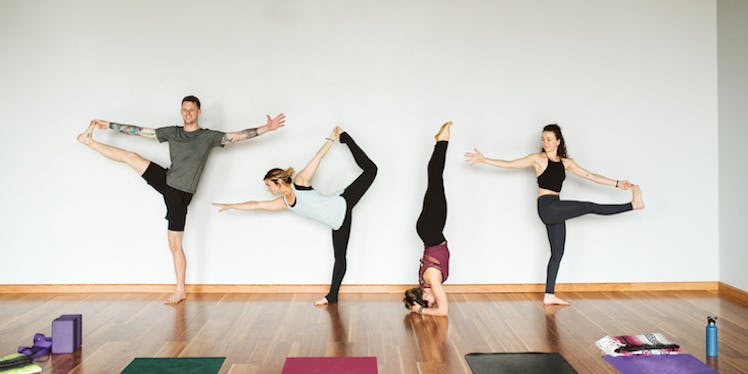
"Yoga Butt" Is The Injury You Really Don't Want To Get In Your Practice & Here's Why
If rolling out your yoga mat and going to your favorite instructor's class has come to be your favorite part of the day, you know how frustrating it can be when you get injured and can no longer move freely from one asana to the next. While yoga can be an incredibly gentle, sustainable, and low-impact practice that's great for your muscles and joints, there always remains the potential to pull, twist, or strain something. For example, "yoga butt" is an injury that commonly pops up in the practices of beginner yogis and advanced practitioners alike. And, for lack of a better way to phrase it, it's a serious pain in the ass.
As a yoga teacher who has been dedicated to a daily practice for many years, I have personally experienced the frustrating aches and pains that come with yoga butt. I've also spoken to countless students who have complained about pain within their own practices, and many times, I immediately knew that yoga butt was, indeed, the culprit.
In yoga, there's a lot of emphasis placed on stretching out tight hamstrings. However, if this muscle is weak to begin with, problems and injuries can arise from over-stretching — sometimes in the form of yoga butt.
The best way I would describe this pesky injury, from my own experience, is a dull pain running through the length of your hamstring that's amplified when you attempt to stretch your hammies in a forward fold or split.
However, the pain that comes with yoga butt, according to Maha Yoga Studio, can present itself in other ways, such as a pins-and-needles sensation on the sides of your glutes or calves, or a sharp aching around your sit bones (the sharp bones in your behind that you can feel when you're sitting down) when you're in a seated position.
Unfortunately, yoga butt doesn't have just one specific way in which it sneaks up on yogis. This injury can come up in a variety of ways, due to any number of common mistakes made in a typical vinyasa practice.
According to Well + Good, there are three types of yoga butt that can all threaten to dampen the sheer joy of your downward dog. The first is from overuse of your muscles, which happens when you do the same poses too often. The second (and most common) is good ol' over-stretching, which can lead to even more serious tears that can take a while to heal. The third yoga butt culprit comes from putting too much weight on your sit bones in seated postures. Sounds painful, right?
Though yoga butt is super common, it's also easily avoidable, as long as you know the right precautions to take.
The number one yoga butt-buster is to make sure you're listening to all the alignment cues that your teacher is giving you in class. I know it can be easy to close your eyes and get lost in the moment and the flow of your breath, but alignment is so important in preventing yoga injuries of any kind.
For example, if you're in a triangle pose, your instructor might tell you to bring your right hip forward, and your left hip back. This is so that the foundation of the pose will be strong and stable, so you're not just stretching out your hamstring, collapsing into the pose, and hoping for the best. Plot twist: The best probably won't come. Yoga butt will sneakily prevail, my friend, but you can outsmart it by tuning into those helpful alignment cues.
Along with paying attention to alignment, always make sure you're squeezing your glutes and engaging your muscles in deep hamstring stretches. And, above all, listen to your body, and make sure not to push or force anything within your practice. It isn't a race, guys. It's just yoga!
If you already have yoga butt, it's not the end of the world. To ease the pain, try to take things slow with your practice, especially if it feels like it's amplifying the issue. If the pain gets really bad, make sure you speak with a doctor about the best therapy or treatment for you.